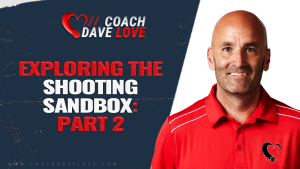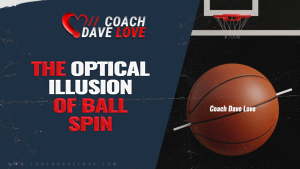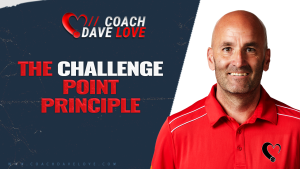The Constraints-Led Approach (CLA) has gained significant traction in recent years as a powerful framework for developing athletes’ movement skills. Rooted in ecological dynamics, CLA emphasizes creating practice environments that simulate game conditions while encouraging athletes to adapt to different constraints, such as task rules, environmental factors, or individual characteristics. However, while this approach has broad theoretical appeal, applying it effectively, particularly in basketball shooting development, is far more complex than it initially appears.
In this blog, we’ll dive into a recent research paper that highlights both the strengths and limitations of CLA and how they relate to basketball shooting. We’ll explore how understanding the balance between promoting variability and ensuring stability in movement patterns is key to effectively applying CLA to shooting development. We’ll also address the challenges coaches face in helping players break ingrained habits and develop new, more effective shooting mechanics.
The Promise of the Constraints-Led Approach
The core idea of CLA is simple: rather than prescribing specific movements, coaches design practice environments that manipulate various constraints (task, environmental, or personal) to allow players to discover effective movement solutions on their own. For example, a coach might introduce a dynamic movement into a shooting drill, forcing the player to adjust their body posture to become more balanced, thus leading to more game-representative shooting practice. This adaptability makes CLA particularly appealing in complex, dynamic sports environments like basketball.
In theory, CLA encourages a player to explore new movement patterns, potentially finding more efficient or effective ways to shoot the ball. The idea is that by exposing athletes to a range of tasks and environmental challenges, they will “self-organize” their movement patterns in response to the constraints, ultimately leading to more adaptive and robust performance.
The Challenge: Breaking Ingrained Habits in Shooting
However, in basketball shooting, many players already have deeply ingrained habits, often developed over years of practice. These habits may not be optimal, but they are stable. When introducing complex drills or high variability too early, players are likely to revert back to their old patterns rather than exploring new, more effective ones. This can make the process of developing new habits frustratingly slow and ineffective, particularly for shooters who struggle with consistency.
One of the limitations of CLA in shooting development is this tension between creating game-representative environments and promoting new movement patterns. For weaker shooters who already have a lot of variability in their shooting mechanics, adding more variability in the form of complex drills can make things worse. The players may start exploring new movements, but those movements may be just as ineffective as their original patterns. Essentially, without the right guidance, CLA can lead to players “wandering” into bad habits rather than improving.
Understanding Variability: Too Much vs. Too Little
CLA is often misunderstood as a framework that always pushes for high variability in practice. While variability is crucial for building adaptive skills, too much variability too soon can overwhelm a player, particularly if they haven’t stabilized the basic mechanics of their shot. For example, if a player has inconsistent footwork or a misaligned release, adding defenders or changing court positioning too frequently can cause them to revert to ineffective habits rather than exploring better options.
This is where the understanding of shooting mechanics becomes critical for coaches using CLA. Coaches need to have a deep understanding of the specific habits they want to guide players toward or away from. Without this understanding, introducing high variability may result in players practicing movements that are just as ineffective as the ones they’re trying to replace.
Limiting Variability vs. Eliminating Variability
When we say that we should limit variability for weaker shooters to help them stabilize the new movement pattern, it’s important to clarify that limiting variability doesn’t mean eliminating it altogether. Instead, it means an appropriate reduction of variability, based on factors like the skill level of the player, the functional difficulty of the habit for that player, and the amount of time available for development.
Many coaches fall into the trap of eliminating variability entirely, leading to block or constant practice—where players repeat the same movement over and over again in controlled, unchanging conditions. While this might help stabilize the movement, it limits the player’s adaptability. Players in block practice may show improvement in the moment, but they often struggle to transfer that skill into game situations, where variability is unavoidable. The key is to find the right balance—providing enough stability to encourage a new habit while gradually increasing variability to enhance adaptability.
Practical Example: Limiting, Not Eliminating, Variability
Imagine working with a player who has a habit of shooting with a low release point, leading to a flat trajectory on their shots. Introducing variability by changing the shooting distance or adding defenders might reinforce this poor habit because the player is comfortable with it under pressure. Instead, a more effective approach would be to temporarily reduce variability and focus on stabilizing a new movement pattern, such as increasing the release height.
In this phase, the player would focus on repeating this new pattern without too many distractions. However, this doesn’t mean doing the exact same drill in the exact same way over and over. You might introduce slight variations—such as altering where the player receives the ball or the direction of movement before the shot—while still maintaining a focus on the release point. Once the player demonstrates consistent improvement in this specific movement pattern, you can gradually increase task complexity by introducing defenders, changing shooting angles, or adding time constraints. The key is to dramatically increase variability only after the new habit has stabilized, ensuring that the player doesn’t revert to old habits under pressure.
The Importance of Understanding Shooting Mechanics
In my experience, some coaches who have a strong understanding of CLA are ineffective with weaker shooters because they lack a deep understanding of the shooting mechanics they are trying to develop. CLA relies on the assumption that players will eventually self-organize toward effective movement patterns, but without knowing the desired end point, players may simply explore different movements that are equally ineffective.
For example, a coach may design drills that involve shooting from different spots on the floor, with varying levels of defensive pressure, to help players adapt. But if the player’s base shooting mechanics (like foot alignment, release angle, or wrist action) are already inconsistent, these variable drills may reinforce or introduce further inconsistency. In these cases, it’s essential to first limit variability and focus on specific mechanical adjustments before reintroducing complexity.
The Solution: A Stepwise Approach to Shooting Development
To effectively develop shooters using CLA, coaches need to adopt a stepwise approach:
Identify and Stabilize Key Habits: First, isolate the key mechanics that need improvement (e.g., footwork, hand positioning, release angle) and focus on stabilizing those movements in a low-variability environment. This might involve drills that repeat specific patterns until the new habit feels stable.
Introduce Controlled Variability: Once the player has stabilized the new habit, start to introduce controlled variability. This might mean changing court positioning or introducing defenders but still keeping the task focused on the specific movement pattern that needs to be developed.
Gradually Increase Complexity: As the player becomes more comfortable with the new movement, increase the task complexity. Add more game-like constraints, such as timing pressure, defensive rotations, or specific game scenarios, to ensure the player can execute the new habit under varying conditions.
Conclusion: The Need for a Deep Understanding
In summary, the Constraints-Led Approach offers a promising framework for developing adaptive movement skills in basketball shooting, but its success depends on the coach’s ability to balance variability with stability. For weaker shooters, the tendency to revert to ingrained habits under complex or variable conditions means that coaches must first focus on stabilizing key movement patterns before introducing variability. A strong understanding of shooting mechanics is essential, as is a nuanced application of CLA that takes into account the specific needs of each player.
Coaches who can master this balance will be better equipped to guide their players toward more consistent and effective shooting mechanics, ultimately helping them to thrive in game situations where adaptability and precision are essential.



